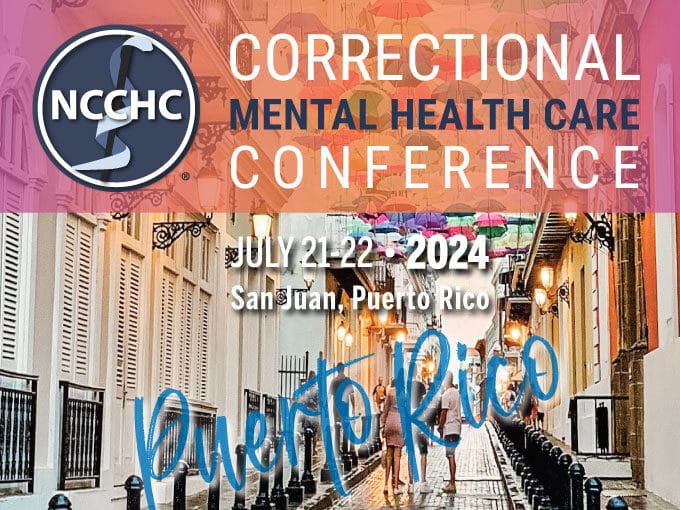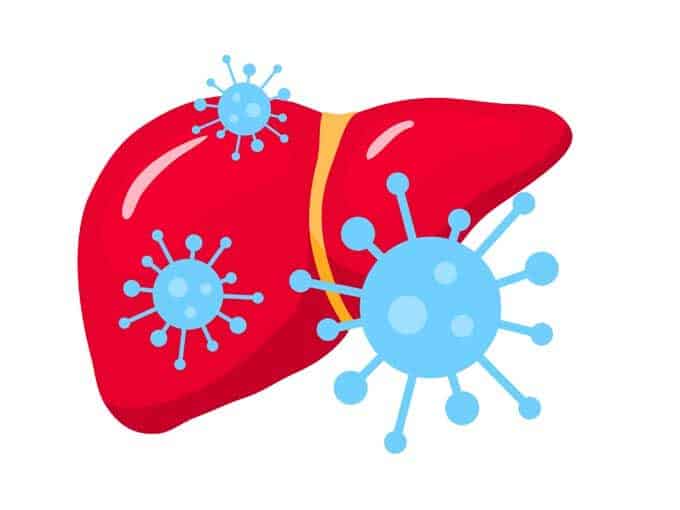
Say hola to Puerto Rico
The 2024 Correctional Mental Health Care Conference will be held in sunny San Juan!
Home A Word About Coronavirus Testing
By Brent R. Gibson, MD, MPH, CAE, FACPM, CCHP-P
A Review
As the nation gets back to work and many patients recover from COVID-19, there is a lot of discussion about testing. Compounding this, the clinical picture of the disease (the actual experience of patients and how we physicians treat them) is evolving.
Testing is very relevant to the correctional health care setting. At the end of this discussion, you’ll find some ideas and resources to help you make sound decisions.
Setting Expectations
Most of us have experience with our doctors checking a limited number of things to make clinical decisions – for example, blood pressure or weight. We understand that that number is really important to our health. We make lifestyle changes and sometimes take medication to get that number where we want it. Some look to the COVID-19 tests in this way. Many of us would like a quick way to make risk assessment about our patients and populations and we are hopeful that the test for COVID-19 will do just that.
Screening vs. Testing
Let’s back up to 35,000 feet and explore the differences between screening vs. testing. Are these the same thing? Screening is a common term used in preventive medicine. In general, the term is used to refer to activities that detect a disease, condition, or risk for disease that is not previously known. Diagnostic studies (e.g., radiography, laboratory work) may be a part of screening (or even the entire screen), but so too can a series of questions or other types of inquiry. Contrast this to the more specific term, testing. Testing refers to a study or studies performed to detect something specific that may or may not be an obvious or clinical component of a disease process. The difference between testing and screening is an important distinction for leaders and providers alike.
Let’s take tuberculosis as an illustrative example of this dynamic. A tuberculin skin test (Mantoux) is used as part of the screening for tuberculosis. The TST lets us know that a person has been exposed to the tuberculosis bacteria at some point. It doesn’t tell us much about the state of disease in a patient. Other components of TB screening (such as questions about symptoms and sometimes a chest radiograph) come together with the TST to help the clinician answer the key questions: Is this patient sick? Do they need treatment? Are they going to make other people sick? This same kind of process is needed, and is operating, during the current pandemic.
For the current crisis, everyone is talking about testing, and for good reason. In the clinical murkiness of COVID-19, the test for the COVID-19-causing virus is profoundly important. But many of the questions we get suggest that people are looking to the test to screen asymptomatic patients and using the results as a litmus test for patient disposition. Let’s explore this a little bit.
First and foremost, despite the importance of the test, it is not a substitute for proper screening. Screening for this disease must include a careful history and assessment of signs and symptoms, such as fevers, cough, shortness of breath, chills, muscle pain, and loss of taste or smell. Screening has a practical benefit, as well, because many positive findings correlate with transmissibility. Although the science is evolving, a coughing patient who is actively infected with COVID-19 may carry a different risk of spreading the disease to susceptible individuals than a patient without these symptoms. The same can’t be said about a positive COVID-19 test. What does a positive test alone mean with regard to virus transmissibility? Keep reading.
Molecular Diagnostics vs. Serologic Testing
The first type of test is looking for the virus itself. Currently using a technology referred to as polymerase chain reaction (PCR), this test looks for viral genetic material (RNA) in patients. The clinical implications are that the infection is current or very recent and the virus itself is detectable. Much of the national conversation about testing relates to molecular diagnostics.
Serologic testing, on the other hand, looks for antibodies, a specialized kind of protein (a glycoprotein) that helps the body fight infection. Antibodies form the backbone of our natural response to many infections and their presence is also tightly related to immunization strategies. It follows then that antibodies (such as IgG and IgM) become detectable at some point during or after infection. The details of COVID-19 immunology are still emerging, but we can think about the pattern of antibodies present in a patient’s serum as important for informing clinicians where they are in the cycle of infection. With continued research, we might even be able to estimate the risks for contracting the disease (again) or for transmission to others.
One way to think about the different uses of these two types of testing is that molecular diagnostics (testing for the virus) would be an important part of a test, track, and trace (TTT) strategy. Because this test indicates active infection, it can help health authorities manage an outbreak in real time and predict immediate health services needs. Serologic testing, in contrast, tends to look back in time, and likely has more utility in determining back-to-work status and helping public health officials understand how the disease has spread through the population.
Limitations to Testing
In the national response to the COVID-19 epidemic, there has been a lot of effort to develop and expand all types of testing for COVID-19. Not all tests are necessarily reliable and in fact may not give us the information we need. Molecular diagnostics (testing for the virus) are very fast, specific, and sensitive, but tend to be complex and may require a lab to process. There is also a risk of false negatives if the sampling technique is poor.
Serologic testing (antibodies) carries a risk of both false positives and false negatives, and the timing of testing is especially critical. Both types of testing are the subject of active research and development, and researchers are looking at point-of-care rapid test versions of each. It is likely that both types of testing, once refined, will play an important role in the national response and by extension in correctional health care. Remember, testing is a part of the solution and complements good clinical and public health judgment.
What Does This Mean for You?
Returning to the challenges we face in the field with determining how to house and care for our patients, during a pandemic, correctional decision making is heavily influenced by clinical decision making; the two professional influences must continue to work together and correctional leaders look to us for guidance. Along these lines, we get questions from the field related to testing and housing such as: Does a negative test mean it is OK to house in general population? Is a negative test required to release from quarantine? Does a negative test mean the patient can’t get sick from COVID-19 again? Does a positive test alone mean the person must be isolated? These are all excellent questions and there are no easy answers.
What Should You Do Right Now?
We recommend you take the following steps:
As you begin or continue in this aspect of your COVID-19 response, let me refer you to a helpful resource that is frequently reviewed and updated, CDC Discontinuation of Isolation for Persons with COVID-19 Not in Healthcare Settings. Note the emphasis (at the time of writing) on symptoms and different approaches for release from isolation.
For physicians and other clinical specialists, you will find additional useful information here: https://jamanetwork.com/journals/jama/fullarticle/2765837
Another resource that provides additional detail on COVID-19 testing strategy: OECD Policy Responses to Coronavirus (Covid-19): Testing for COVID-19: A way to lift confinement restrictions.
I hope this helps shed a little light on COVID-19 testing and screening and how it integrates into your approach. Be healthy and safe out there and keep those questions coming.
About NCCHC Resources, Inc.
Brent Gibson is the chief health officer of NCCHC and the managing director of NCCHC Resources. NCCHC Resources, Inc., provides technical consulting services for correctional health care systems nationwide. As jails, prisons and juvenile detention facilities strive to deliver constitutional health care, improve quality and reduce liability, NCCHC Resources can offer unique expertise from the world’s leaders in correctional health care. With our roots in the National Commission on Correctional Health Care – the nation’s leader in setting standards for correctional health services – NCCHC Resources offers unparalleled breadth, depth, experience and perspective.


